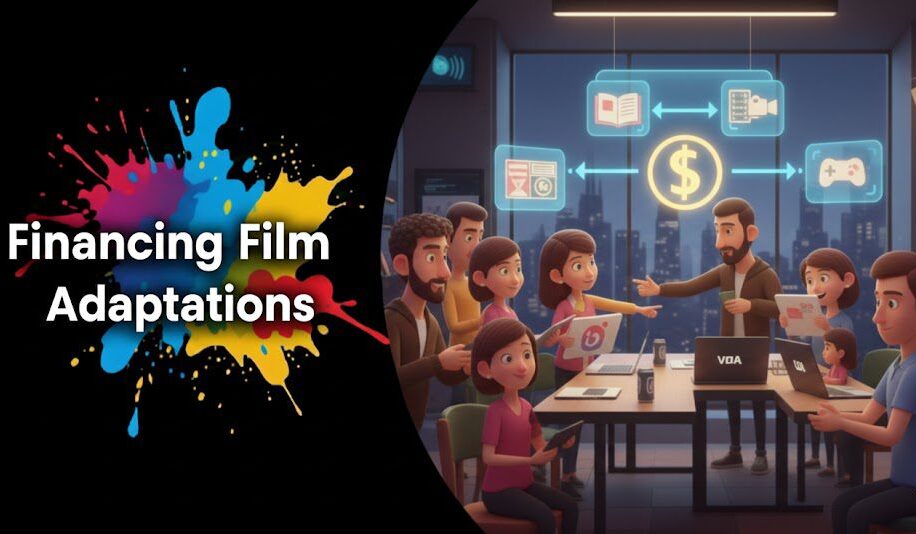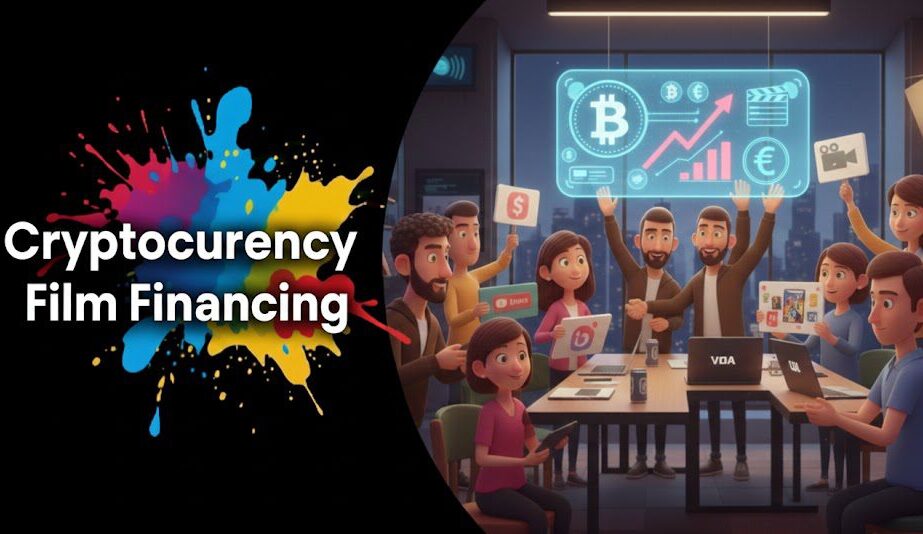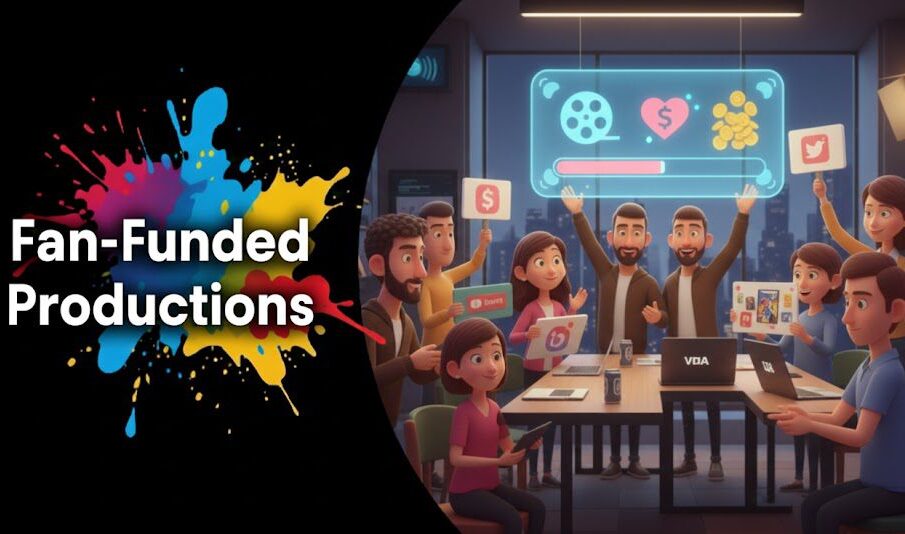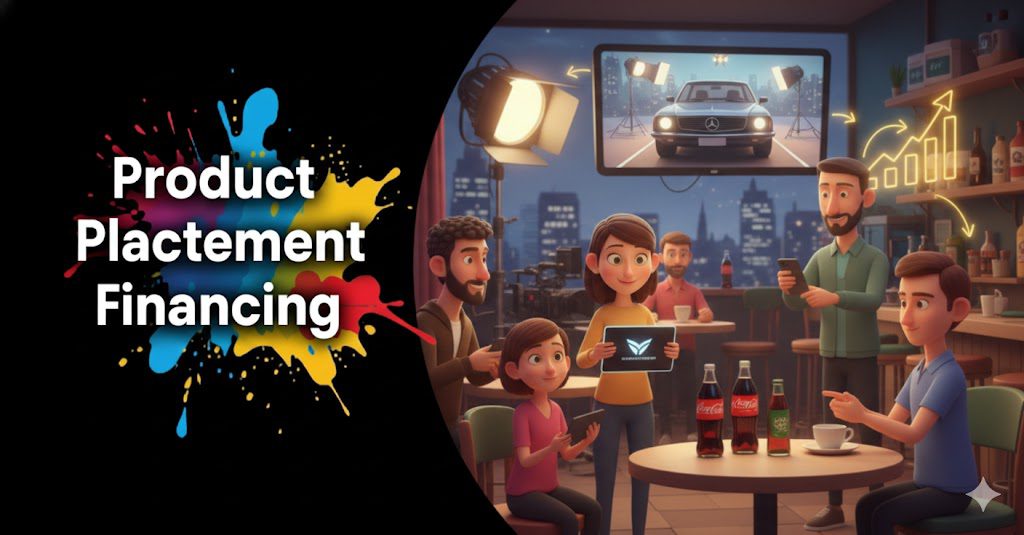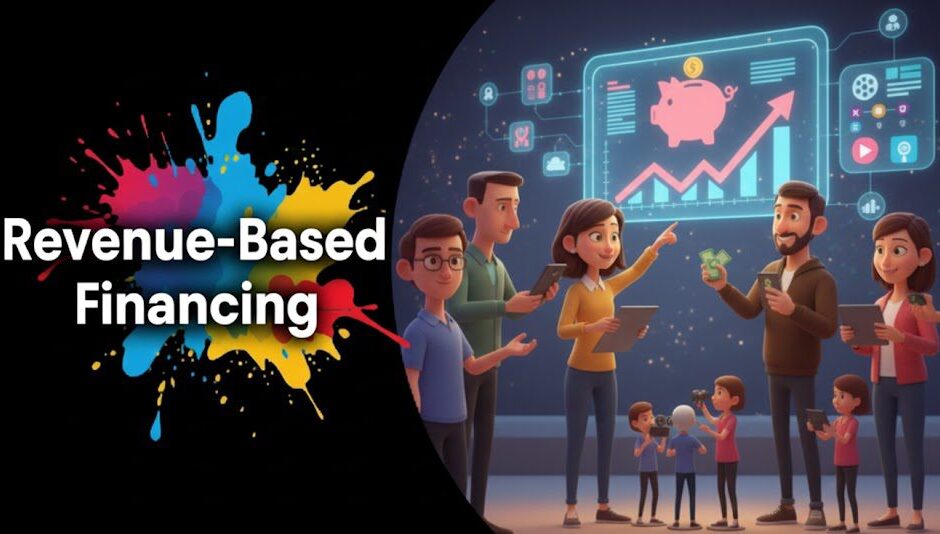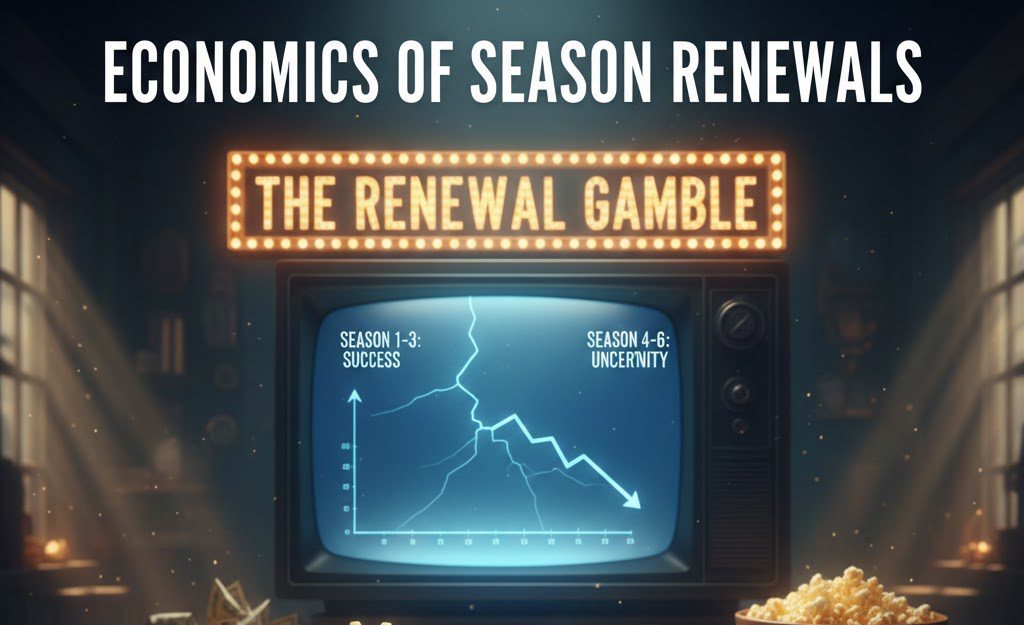Introduction
The media and entertainment landscape is in a perpetual state of transformation, and with it, the world of content licensing is rapidly evolving. Understanding the future of content licensing and staying ahead of emerging content licensing trends is no longer a luxury but a necessity for all M&E professionals, strategists, and innovators.
Groundbreaking advancements like AI in media licensing, the proliferation of new digital platforms including the potential of metaverse content licensing and NFTs in content licensing, the unstoppable force of globalization driving global content demand, and seismic shifts in viewer habits are all converging to reshape how content is created, distributed, valued, and consumed. This article explores these transformative forces and what they mean for the deals, strategies, and opportunities that lie ahead.
Table of content
- Introduction
- Key-Takeaways
- The Evolving Landscape: What’s Shaping the Future of Content Licensing?
- The Rise of AI in Media Licensing: Efficiency and Insights
- Beyond Streaming: Metaverse Content Licensing and NFTs in Content Licensing
- Globalization and Shifting Viewer Habits: Impact on Global Content Demand
- The Continued Streaming Impact on Licensing Models
- Navigating Challenges and Seizing Opportunities in Future Licensing
- Preparing for Tomorrow: How Industry Players Can Adapt
- Conclusion
- FAQs
Key Takeaways
| Future Trend Area | Core Insight | |
|---|---|---|
| Future of Content Licensing | Marked by increased data-driven decisions, platform diversification, global content flows, and technological disruption. | |
| AI in Media Licensing | AI will enhance content discovery, automate rights management, predict performance, and potentially assist in deal-making. | |
| New Platforms (Metaverse/NFTs) | Offer nascent but potentially significant new avenues for experiential licensing, digital collectibles, and direct-to-fan engagement. | |
| Globalization & Viewer Habits | Rising global content demand for diverse stories, personalized experiences, and on-demand access across multiple screens. | |
| Streaming Impact on Licensing | Continued influence on windowing, exclusivity models, and the value of different content types. Growth in AVOD/FAST channels. | |
| Adaptation is Key | Professionals and platforms like Vitrina must adapt to these content licensing trends to thrive. | |
| Further Learning | For a comprehensive overview, see our Definitive Guide to Content Licensing. | |
Understanding the Impact of New Tech on Licensing?

The Rise of AI in Media Licensing: Efficiency and Insights
Artificial Intelligence (AI) is rapidly moving from a buzzword to a tangible force within the media industry, and its application to AI in media licensing promises to bring significant efficiencies and deeper insights. While AI won’t replace human negotiators or creative decision-makers anytime soon, it offers powerful tools to augment their capabilities, streamline complex processes, and unlock new value in the future of content licensing. From automating tedious tasks to uncovering hidden patterns in viewership data, AI is set to become an indispensable assistant for content buyers, sellers, and rights managers.
How AI is Enhancing Content Discovery and Recommendation:
One of the most immediate impacts of AI in media licensing is in content discovery.
- Intelligent Search: AI algorithms can analyze vast content libraries and metadata far more effectively than manual searches, helping buyers find highly specific content that matches their audience profiles and programming needs.
- Personalized Recommendations for Acquirers: Platforms like Vitrina are using AI to provide curated content recommendations to buyers based on their past acquisitions, stated interests, and real-time market demand.
- Predicting Audience Appeal: AI can analyze scripts, themes, cast, and even visual elements to predict a piece of content’s potential appeal to specific demographics, aiding in valuation.
AI for Automating Rights Management and Analytics:
Managing complex rights across multiple territories and windows is a major challenge. AI offers solutions:
- Automated Rights Tracking: AI can help manage complex rights databases, flag expiring licenses, identify available rights (“avails”), and detect potential conflicts.
- Contract Analysis: Natural Language Processing (NLP) capabilities in AI can assist in reviewing and summarizing key terms from lengthy licensing agreements.
- Performance Analytics and Forecasting: AI can analyze viewership data to provide deeper insights into content performance and help forecast future revenue potential, influencing content licensing trends in valuation.
The Future of AI in Deal-Making and Valuation:
Looking ahead, AI could play an even more direct role:
- Assisting in Pricing Models: By analyzing market comparables and performance data, AI could suggest optimal pricing ranges for different types of content and rights packages.
- Streamlining Initial Negotiations: Potentially automating the generation of initial term sheets based on predefined parameters or identifying common ground between parties.
However, the human element of relationship building and nuanced negotiation will remain critical in the future of content licensing.
| AI Application | Benefit for Licensing | Example Scenario |
|---|---|---|
| Content Discovery | Buyers find relevant content faster; sellers reach right buyers. | AI suggests niche documentaries to a platform based on its audience data. |
| Rights Management | Increased accuracy, efficiency in tracking deals and avails. | AI flags an upcoming license expiry, prompting renewal discussions. |
| Performance Analytics | Deeper understanding of content value and audience behavior. | AI identifies that a specific genre overperforms with a key demographic. |
Beyond Streaming: Metaverse Content Licensing and NFTs in Content Licensing
While traditional and current streaming platforms dominate today’s landscape, the future of content licensing is also looking towards entirely new digital frontiers. Emerging concepts like metaverse content licensing and the use of NFTs in content licensing are beginning to spark conversations about novel ways to distribute, experience, and monetize media. Though still in their early stages and with many unknowns, these technologies present intriguing possibilities for creating immersive content experiences, fostering direct fan engagement, and developing new revenue streams beyond conventional licensing models. These are cutting-edge content licensing trends to watch.
Exploring Metaverse Content Licensing Opportunities:
The Metaverse – persistent, shared, 3D virtual worlds or environments – could offer unique licensing avenues:
- Virtual Cinemas and Screenings: Licensing films or TV shows for exhibition within virtual cinema spaces, offering communal viewing experiences.
- In-Metaverse Branded Content: Opportunities for brands or existing IP (like film characters or worlds) to be licensed for integration into Metaverse platforms or games.
- Live Events and Experiential Content: Licensing rights for virtual concerts, Q&A sessions with talent, or interactive narrative experiences tied to existing IP.
- Virtual Merchandise: Licensing IP for digital goods (e.g., character skins, virtual clothing) within Metaverse environments.
The legal frameworks and revenue models for metaverse content licensing are still being actively defined.
NFTs in Content Licensing: Digital Collectibles and Beyond?
Non-Fungible Tokens (NFTs) are unique digital assets verified on a blockchain. Their application in content licensing is being explored:
- Digital Collectibles: Creating and selling limited-edition NFTs representing iconic movie moments, character art, behind-the-scenes footage, or digital posters. This is more about ancillary revenue than core content licensing.
- Access Tokens: NFTs could potentially grant holders exclusive access to content, communities, or experiences.
- Fractional Ownership/Royalties (Experimental): There’s discussion about whether NFTs could represent a share of content ownership or future royalties, though this is legally and technically complex and not yet mainstream in NFTs in content licensing for core exhibition rights.
- Verifying Authenticity: NFTs could be used to verify the authenticity of digital art or collectibles related to a media property.
The long-term viability and role of NFTs in core content distribution rights licensing is still uncertain, but their potential for fan engagement and new forms of digital ownership are driving experimentation.
| New Platform/Tech | Potential Licensing Application | Current Status/Challenge |
|---|---|---|
| Metaverse | Virtual screenings, in-world branded content, experiential events. | Early stages; defining rights, revenue models, and technical standards. |
| NFTs | Digital collectibles, access tokens, potentially fractional rights. | Primarily focused on collectibles/ancillary; core licensing use cases still experimental and facing regulatory scrutiny. |
Globalization and Shifting Viewer Habits: Impact on Global Content Demand
The insatiable appetite for diverse stories from around the world – or global content demand – is a defining characteristic of modern media consumption and a powerful driver in the future of content licensing. Thanks to the reach of global streaming platforms and increased cultural exchange, audiences are more receptive than ever to films and TV shows from different countries and in various languages. This trend, coupled with evolving viewer habits like binge-watching, on-demand expectations, and multi-screen consumption, is profoundly influencing content licensing trends and strategies for both buyers and sellers.
The Rise of International Content and “Glocalization”:
We’re seeing a surge in:
- Non-English Language Hits: Series and films from countries like South Korea (“Squid Game”), Spain (“Money Heist”), India, and France are achieving massive global success, often requiring extensive dubbing and subtitling efforts.
- “Glocalization”: Global platforms are increasingly commissioning local original productions in various territories (“local originals for global audiences”) while also licensing successful local content for wider international distribution.
- Increased Co-Productions: More international co-productions are happening to share costs, mitigate risks, and create content with broader cross-cultural appeal.
This means more opportunities for international sales and acquisitions in the future of content licensing.
Impact of Evolving Viewer Habits on Licensing:
- On-Demand Expectation: Viewers want to watch what they want, when they want. This fuels demand for VOD rights (SVOD, AVOD, TVOD) and influences windowing strategies, often shortening traditional exclusivity periods.
- Binge-Watching: The popularity of watching multiple episodes or entire seasons in one go makes “stacking rights” (the right to offer multiple/all episodes of a series) highly valuable for TV content licensing.
- Multi-Screen Consumption: Content needs to be accessible on various devices (TVs, laptops, tablets, smartphones), impacting technical delivery requirements in licensing deals.
- Personalization and Curation: Viewers expect platforms to recommend content tailored to their tastes, driving platforms to license a diverse range of niche and mainstream content.
These habits directly shape the streaming impact on licensing.
| Trend | Effect on Content Licensing | Strategic Implication |
|---|---|---|
| Increased Global Content Demand | More opportunities for international sales and acquisitions; greater need for localization. | Sellers should target global markets; buyers should diversify sourcing. |
| On-Demand & Binge-Watching | Higher value for VOD rights, stacking rights for series. Shorter traditional windows. | Prioritize securing appropriate VOD rights; structure deals for flexible viewing. |
| Personalization | Need for diverse catalogs to cater to niche tastes alongside mainstream hits. | Buyers should license a mix of broad appeal and specialized content. |
Ready to Future-Proof Your Content Strategy?

The Continued Streaming Impact on Licensing Models
The rise and continued dominance of streaming services (SVOD, AVOD, FAST) have fundamentally altered content licensing trends and will continue to shape the future of content licensing. This ongoing streaming impact on licensing affects everything from how content is valued and windowed to the types of rights that are most sought after and the business models that underpin deals. Both established studios and independent creators must adapt their strategies to navigate this streaming-centric landscape effectively.
Shift in Windowing Strategies:
Streaming has led to:
- Compressed Theatrical Windows: The exclusive period for theatrical releases has often shortened, with films moving to PVOD or SVOD platforms much sooner.
- “Direct-to-Streaming” Releases: Some films bypass theatrical release entirely, premiering exclusively on a streaming service.
- Flexible TV Series Windows: Global streamers often acquire worldwide rights for all seasons of a show, making them available simultaneously, disrupting traditional territory-by-territory, season-by-season TV licensing.
Exclusivity and Original Content Wars:
The competition among streaming platforms has fueled:
- Demand for Exclusive Content: Streamers pay premiums for exclusive rights to differentiate their services and attract/retain subscribers.
- Investment in “Originals”: Platforms are heavily investing in producing their own original content or acquiring exclusive “first-window” global rights to brand content as their own. This impacts the market for third-party licensed content.
This environment creates both high-value opportunities and intense competition for desirable content.
Growth of AVOD and FAST Channels:
The rapid expansion of Advertising-supported Video-on-Demand (AVOD) and Free Ad-supported Streaming TV (FAST) channels is creating new licensing avenues:
- Monetizing Library Content: These platforms provide a significant market for older films and TV series that may have exhausted their premium SVOD or pay-TV windows.
- Non-Exclusive Deals: AVOD/FAST deals are often non-exclusive, allowing rights holders to license content to multiple services simultaneously.
- New Revenue Streams: Offering an alternative or supplementary revenue stream, often based on ad revenue sharing.
This is a growing segment within the overall streaming impact on licensing.
| Streaming Impact | Effect on Licensing Practices | Consideration for Rights Holders |
|---|---|---|
| Compressed Windows | Reduces value of some traditional ancillary windows. | Evaluate overall deal value vs. sequential windowing revenue. |
| Demand for Exclusives/Originals | Drives up prices for premium content; may reduce slots for other licensed content. | Position content as essential for platform differentiation or fill specific library needs. |
| Rise of AVOD/FAST | New monetization opportunities for library/niche content. | Explore non-exclusive deals to maximize reach on these platforms. |
Navigating Challenges and Seizing Opportunities in Future Licensing
The dynamic future of content licensing, with its technological disruptions and shifting market forces, presents both significant challenges and exciting opportunities for industry players. Navigating this landscape successfully requires agility, strategic foresight, and a willingness to embrace new models. While issues like rights complexity, piracy, and intense competition persist, the growing global content demand and the emergence of new platforms and monetization strategies offer unprecedented avenues for growth. Understanding these dualities is key to capitalizing on future content licensing trends.
Key Challenges Ahead:
- Rights Complexity and Fragmentation: As more platforms and territories emerge, managing and tracking increasingly granular rights becomes more challenging.
- Data Overload and Analysis: While data is valuable, sifting through vast amounts of information to derive actionable insights can be overwhelming.
- Content Valuation in a Dynamic Market: Accurately pricing content when traditional benchmarks are shifting due to new models like global streaming deals.
- Combating Sophisticated Piracy: Digital piracy continues to evolve, requiring ongoing vigilance and investment in anti-piracy measures.
- Keeping Pace with Technological Change: Investing in and adapting to new technologies like AI, blockchain, or immersive media formats.
Emerging Opportunities:
- Untapped International Markets: Growing middle classes and internet penetration in many regions are creating new audiences hungry for diverse content. Platforms like Vitrina can help sellers reach these markets.
- Niche and Specialized Content Demand: The proliferation of platforms allows for more targeted programming, creating opportunities for content that serves specific interests.
- Direct-to-Consumer (D2C) Models (for some): Some larger rights holders are exploring D2C streaming services, giving them more control over distribution and audience relationships, though this is a major undertaking.
- Innovative Monetization: Exploring new revenue streams through things like metaverse content licensing, interactive experiences, or data-driven ad targeting.
- Collaborative Global Productions: Co-producing content with international partners to share costs and create shows with built-in global appeal.
| Aspect | Challenge | Opportunity |
|---|---|---|
| Technology | Keeping pace, potential for disruption (e.g., deepfakes). | AI for efficiency, new platforms for distribution (Metaverse, NFTs). |
| Market Dynamics | Intense competition, shifting valuation models. | Growth in AVOD/FAST, demand for diverse global content. |
| Rights Management | Increased complexity, piracy. | Better data analytics, AI-powered rights tracking. |
Preparing for Tomorrow: How Industry Players Can Adapt
To thrive in the future of content licensing, all M&E professionals, from independent creators to major studios and platform executives, need to adopt a forward-thinking and adaptive mindset. Embracing new technologies, understanding evolving audience behaviors, and being flexible in deal-making will be crucial. This means continually learning about new content licensing trends, investing in data analytics capabilities, and fostering strong global partnerships. The ability to pivot and innovate will separate the leaders from the laggards in this exciting new chapter of media distribution.
Strategies for Adaptation:
- Invest in Data and Analytics: Utilize data to understand audiences, value content, track performance, and make informed strategic decisions.
- Embrace Technological Tools: Explore and adopt AI-powered solutions for content discovery, rights management, and market intelligence, such as those offered by Vitrina.
- Cultivate Global Networks: Build relationships with international partners, buyers, and creators to tap into the growing global content demand.
- Be Flexible in Deal-Making: Be open to new revenue models, windowing strategies, and platform partnerships.
- Focus on Niche and Diversification: Explore opportunities in specialized genres or underserved audience segments.
- Prioritize Content Security: Continuously update and implement robust anti-piracy and rights protection measures.
- Foster Innovation: Encourage experimentation with new formats, platforms like the Metaverse, and potential applications of technologies like NFTs in content licensing where appropriate.
The streaming impact on licensing will continue, so agility is key.
Conclusion
The future of content licensing is undeniably dynamic, driven by a powerful interplay of technological innovation, globalization, and evolving audience expectations. Key content licensing trends like the integration of AI in media licensing, the continued streaming impact on licensing models, burgeoning global content demand, and early explorations into metaverse content licensing and NFTs in content licensing all point towards a landscape that rewards agility, data-savviness, and strategic foresight. While challenges exist, the opportunities for those who can adapt and innovate are immense.
Understanding these shifts is paramount for all M&E professionals. By embracing new tools, fostering global connections, and remaining flexible in their approach, buyers, sellers, and strategists can successfully navigate this exciting new era. For a deeper understanding of the foundational principles that underpin these future trends, our Definitive Guide to Content Licensing provides essential context.
Stay ahead of the curve in content licensing. Explore Vitrina for cutting-edge market intelligence and connections to navigate the future of global content distribution.
Frequently Asked Questions
AI in media licensing is more likely to augment human roles rather than replace them entirely. AI can handle data analysis, automate repetitive tasks, and provide insights, but human expertise in negotiation, creative judgment, relationship building, and understanding cultural nuance will remain essential for the foreseeable future of content licensing.
Globalization and the rise of niche platforms create more opportunities for unique independent content to find an audience. Online marketplaces can increase visibility to global buyers. Focusing on strong storytelling and building a distinct voice can help independents stand out. Flexible deal-making will also be key.
Metaverse content licensing is still in its very early, experimental stages. While there’s a lot of discussion, widespread, standardized licensing models and significant revenue generation are not yet established. It’s a trend to watch and explore for specific IP, but it’s more of a future potential than a current mainstream revenue driver for most content.
The growing global content demand directly fuels a massive need for high-quality localization services, including dubbing and subtitling in many languages. This is a significant growth area within the M&E supply chain and crucial for content to travel effectively.































